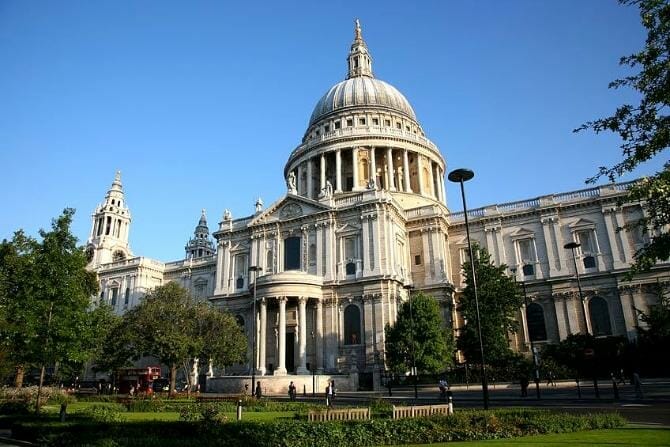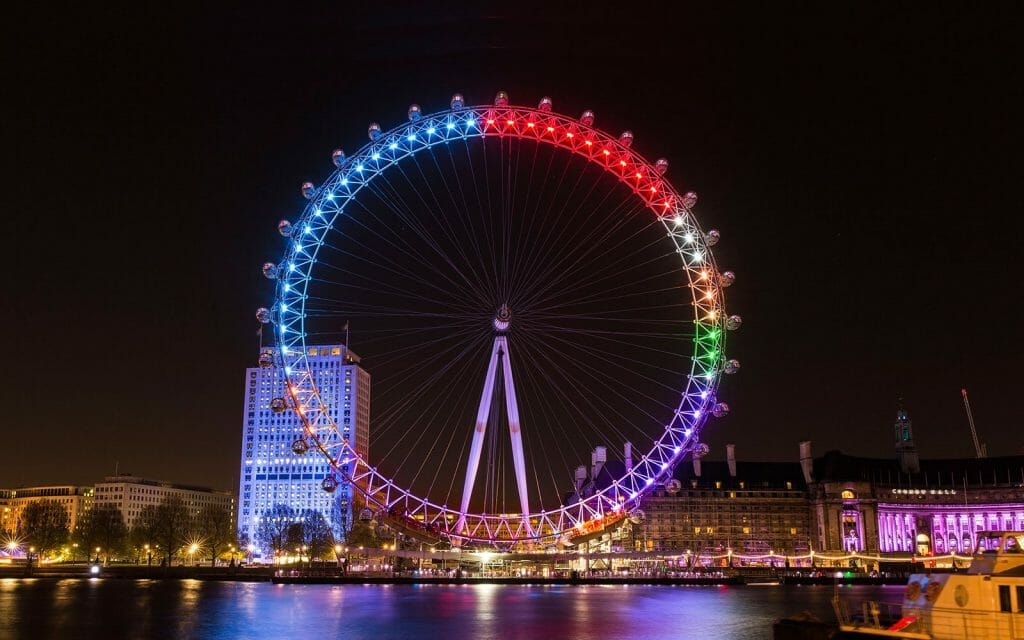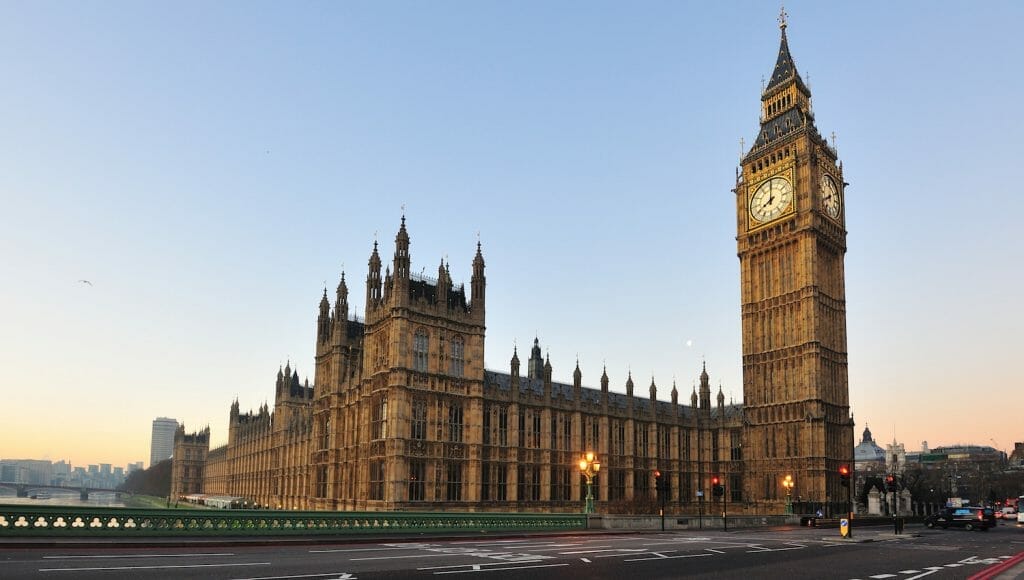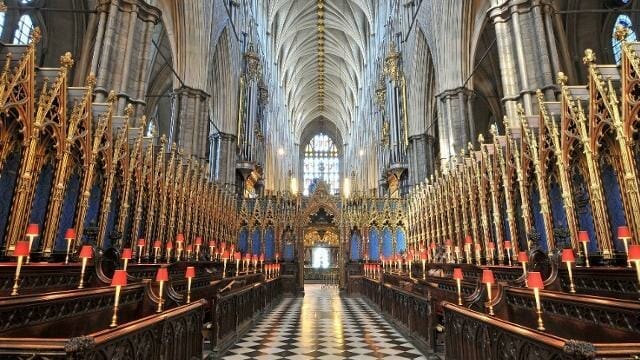Sometimes with overlay times, or when you are on a short business trip you have 1 day to spend in a different city. This time we highlight London in the United Kingdom. What should you do, visit and see if you only have 24 hours in one of the most beautiful cities in London? Let’s kick off and give you the best highlights in one post!
1. St. Paul’s Cathedral
This landmark cathedral was designed by Christopher Wren and construction took 36 years until its completion in 1711. However there were five previous churches which stood on this site, the first dating back to 604AD. Three times the previous churches had been destroyed by fire and rebuilt and the building we see today was constructed following the Great Fire of London in 1666. The church stands on Ludgate Hill, the highest point in the city and is the seat of the Bishop of London. Among the auspicious events held at the cathedral were Winston Churchill’s funeral and the wedding of Charles and Diana.
Distinct features of the church include the dome which is the second largest in the world; it reaches a height of 111 meters and weights approximately 66,000 tons. The dome is supported by eight arches and is crowned by an 850 ton lantern. Visitors can climb the 560 steps to the top of the dome to get awesome views of the city. As you ascend within the dome there are a series of galleries, the first is the Whispering Gallery which earned its name due to its great acoustics. The next gallery is the Stone Gallery which is 53 meters from the ground and protrudes on the exterior of the dome above columns which circle the dome. The Golden Gallery is just beneath the lantern and is the highest point that visitors can climb.
2. Tate Modern (1.1 km, 13 minute walk)
London’s top museum of modern art houses works of art representing a range of modern art movements including fauvism, surrealism, abstract, impressionism, Op Art, minimal art, conceptual art, pop art and more. The art dates from the 1500s to present day and includes both British and international modern and contemporary art. Visitors can see work by Picasso, Matisse, Dali, Degas, Ernst, Warhol, Miro, Magritte and Pollock. There are paintings, murals, prints, drawings, photography, film, performance and sculptures. In addition to the extensive permanent collections there are temporary exhibitions displayed on the 3rd and 5th floors; temporary exhibitions of large scale specially commissioned works by contemporary artists and a collection of British art from the 1500s.
The museum has been organized so that you are taken on a journey through the significant stages of the development of modern art. The art on display has been chosen for its unique contribution to the history and development of art. Recently work from Latin America, South-East Asia and Eastern Europe has been included in the collection. Thanks to the frequent rotation of displays between the Tate Britain, Tate Modern, Tate Liverpool and Tate St. Ives there is always something new to see.
With almost 70,000 works of art by more than 3,000 artists you should plan your visit so that you get to see the highlights of the museum and the pieces which interest you most. Check-out the curator’s pick of the museum highlights which includes 195 works. Among the top picks are Whaam! By Roy Lichtenstein; Weeping Woman by Picasso; Warhol’s Marilyn Diptych; The Lady of Shalott by John William Waterhouse; Recumbent Figure by Henry Moore and Water-Lilies by Claude Monet. So you can see by this impressive list of the crème-de-la- crème of artists and artwork why the Tate Modern has earned its stellar reputation.
Admission to the Tate Modern is free except for special exhibitions. You can download a map of the massive 6 level museum from the museum website. There are two eateries in the museum, the café on the 1st floor and a restaurant on the 6th level where you can get stunning views across the river and city from large panoramic windows. The Turbine Hall has been closed for part of 2013 and will be open again in early 2014.
3. London Eye (1,9 km, 23 minute walk)
Among all the historic attractions of London the London Eye is one of the more recent and contemporary attractions. The Eye is a huge Ferris wheel located on the edge of the Thames River in the Jubilee Gardens. The wheel was built as part of the millennium celebrations and has changed name several times due to different ownership and sponsoring, at present it is officially called the EDF Energy London Eye. The wheel took 1.5 years to build and was designed by David Marks and Julia Barfield. It is constructed from 1700 tons of steel and has foundations made with 3000 tons of concrete.
The wheel is 135 meters high and has a diameter of 120 meters, it was completed in 1999. The wheel has 39 sealed egg shaped capsules which can each hold up to 25 people. Each capsule is 8 meters long and weighs 500kg. In each capsule there is air-conditioning, seating and interactive screens which give information about the sites you can see below in London. One full revolution of the wheel takes about 30 minutes and at ground level the passengers get on and off without the wheel actually stopping; as the Eye rotations at such a slow rate (26cm per second).
From the capsules passengers have a 360 view of London and most of the famous landmarks can be seen from the wheel. There are a number of combination tickets available for the wheel as well as tickets which include a boat ride down the Thames which brings you to the Eye.
While in London, avoid the long lines and save money by getting London Eye tickets in advance.
4. Big Ben & Houses of Parliament (0,6 km, 8 minute walk)
The building widely referred to as the Houses of Parliament is actually called The Palace of Westminster. It is located on the banks of the River Thames and is the place where Britain’s House of Lords and House of Commons convene.
The site where the Palace of Westminster stands today was originally the site of an 8th century Saxon church called West Minster (west monastery). In the 10th century the royals paid an interest in the site and when Edward the Confessor came to power in 1042 he moved his court to Westminster and had a Benedictine abbey and royal church built.
Under William the Conqueror Westminster Hall was built, it is the largest hall of its kind in Europe. Westminster gained importance and grew as different kings made additions to the edifice. In 1265 the two houses of parliament were created, the House of Lords met at Westminster while the House of Commons had no permanent location. In the 13th century King Henry III made several alterations including the Queen’s Chapel, Queen’s Chamber and the Painted Chamber or King’s Chamber which have survived. St. Stephen’s Chapel (1184-1363) was redesigned over the years with beautiful glazed windows, a vaulted wooden roof and walls covered with murals in scarlet, green and blue shades. In 1365 King Edward III had the Chapel of St. Mary Undercroft completed; it was here that the royal court and household prayed. In 1547 the House of Commons joined the House of Lords also meeting at the palace thus Westminster became the undisputed central seat of government.
A fire destroyed the palace in 1834 and the only parts of the original medieval palace which survived are the Cloisters, Chapter House of St. Stephen’s, Chapel of St. Mary’s Undercroft, the Westminster Hall and the Jewel Tower which was built in 1365. After the fire a new neo-Gothic structure was designed by Sir Charles Barry and Augustus Welby Pugin and completed in 1870.
The parliament building has three towers, the octagonal Central Tower; Victoria Tower and the most famous Elizabeth Tower. Victoria Tower (1860) stands opposite Elizabeth Tower, here the records of both houses of parliament have been kept since 1497. During the parliamentary year the British flag is flown on top of the 98 meter high tower.
Big Ben is the name of the bell which hangs in Elizabeth Tower which is at the north end of the Houses of Parliament. The tower is commonly referred to as Big Ben, it is 96 meters tall and UK residents can climb the 393 steps to the belfry. The square tower bears the famous four clock faces of the Great Clock of Westminster. The clock faces of this accurate time piece are 7 meters in diameter and the hour hands are 2.7 meters long. Within the belfry there are five bells, four strike the Westminster Chimes on the quarter hour and the largest bell, Big Ben, strikes on the hour.
UK residents can take a tour of the Houses of Parliament, observe parliamentary debates and even climb up into the Big Ben belfry. Foreign visitors can tour the Parliament building on Saturday and during the Summer Opening, they can also watch debates and committee hearings when Parliament is in session.
5. Churchill War Rooms (0,5 km, 6 minute walk)
The Cabinet War Rooms were constructed in 1938, but they were opened and become operational later in August 1939, soon before the outburst of war. They were used through World War II, before being neglected after the surrender of Japan in 1945. After the war ended, the true historic significance of this structure was realized, which in turn led to the preservation of the Cabinet rooms.
The highlight of the museum is a 15 meters (50 foot) interactive table that provides visitors with an access to scanned materials, predominantly from the archives center of Churchill. The museum won a prize in 2006, which is known as “Council of Europe Museum”. Approximately 300,000 tourists pay a visit to this legendary place every year.
6. Westminster Abbey (0,4 km, 6 minute walk)
This religious edifice is where royal British coronations and burials are held, it is officially a place of worship owned by the royal family. The Abbey stands next to the Houses of Parliament on the edge of the River Thames and parts of the structure have survived since 1050 although the building began as a shrine established here in 616. Edward the Confessor had the Abbey built here in order to redeem himself in the eyes of the Pope after the king failed to take a required pilgrimage. The Abbey was completed in 1065. Christopher Wren and Nicholas Hawksmor were responsible for the addition of the two western towers in the 1700s. The original style was Romanesque but between 1245 and 1517 it was redesigned in the Gothic style. Parts of the King James Bible were translated here and later the New English Bible was compiled here.
The building is famed for its medieval architecture and features like the coronation throne. In the Abbey you can see the Poet’s Corner where the likes of William Shakespeare, Charles Dickens and Geoffrey Chaucer are buried. Among the royals entombed here are Queen Elizabeth I, Queen Mary and King Henry III. Other famous Brits buried in the Abbey are Charles Darwin, Henry Purcell, Sir Isaac Newton and David Livingstone. Above the Great West Door you can see statues of ten 20th century Christian martyrs including Oscar Romero, Martin Luther King Junior and Dietrich Bonheoffer. The relics of the Royal Saint Edward the Confessor are kept in the Sanctuary and the shrine attracts pilgrims who come to pay homage to the saint. The beautiful Chapel House was built in the 1200s and restored by Sir George Gilbert Scott in 1872. The octagonal chapel has eight shafts supporting a vaulted ceiling. Within the 11th century vaulted undercroft is the Westminster Abbey Museum which has been open to the public since 1908.










No Comments